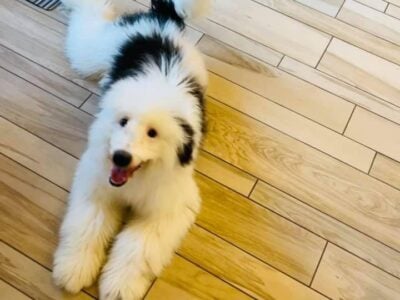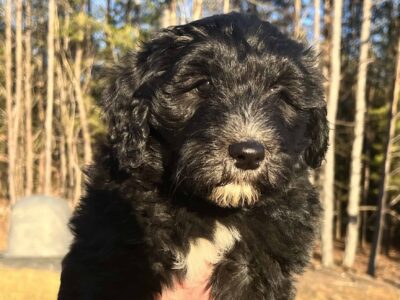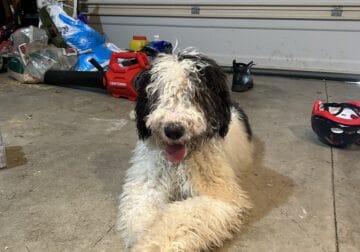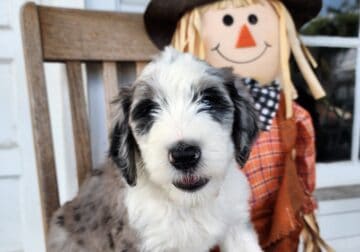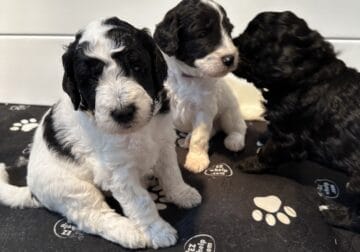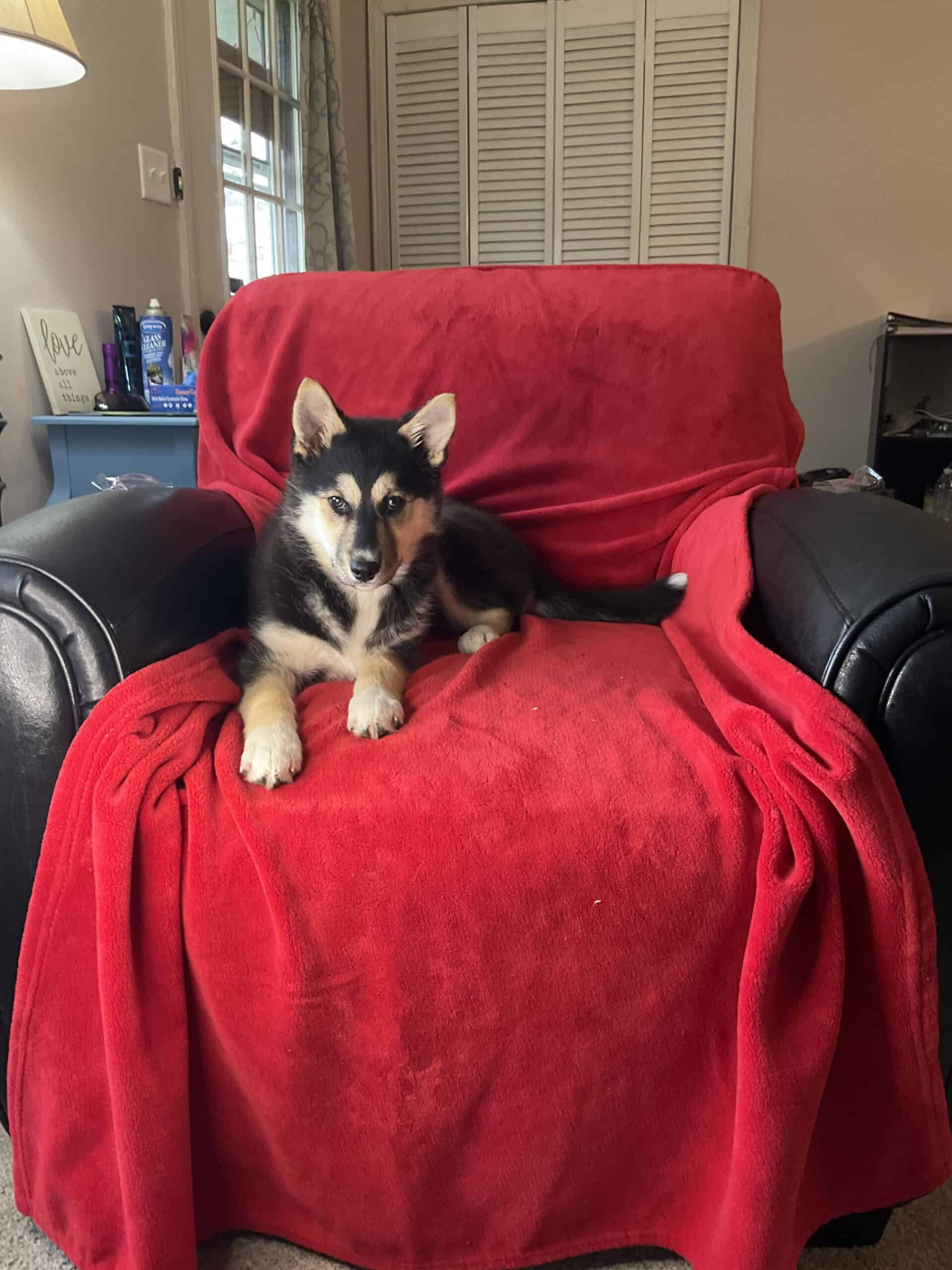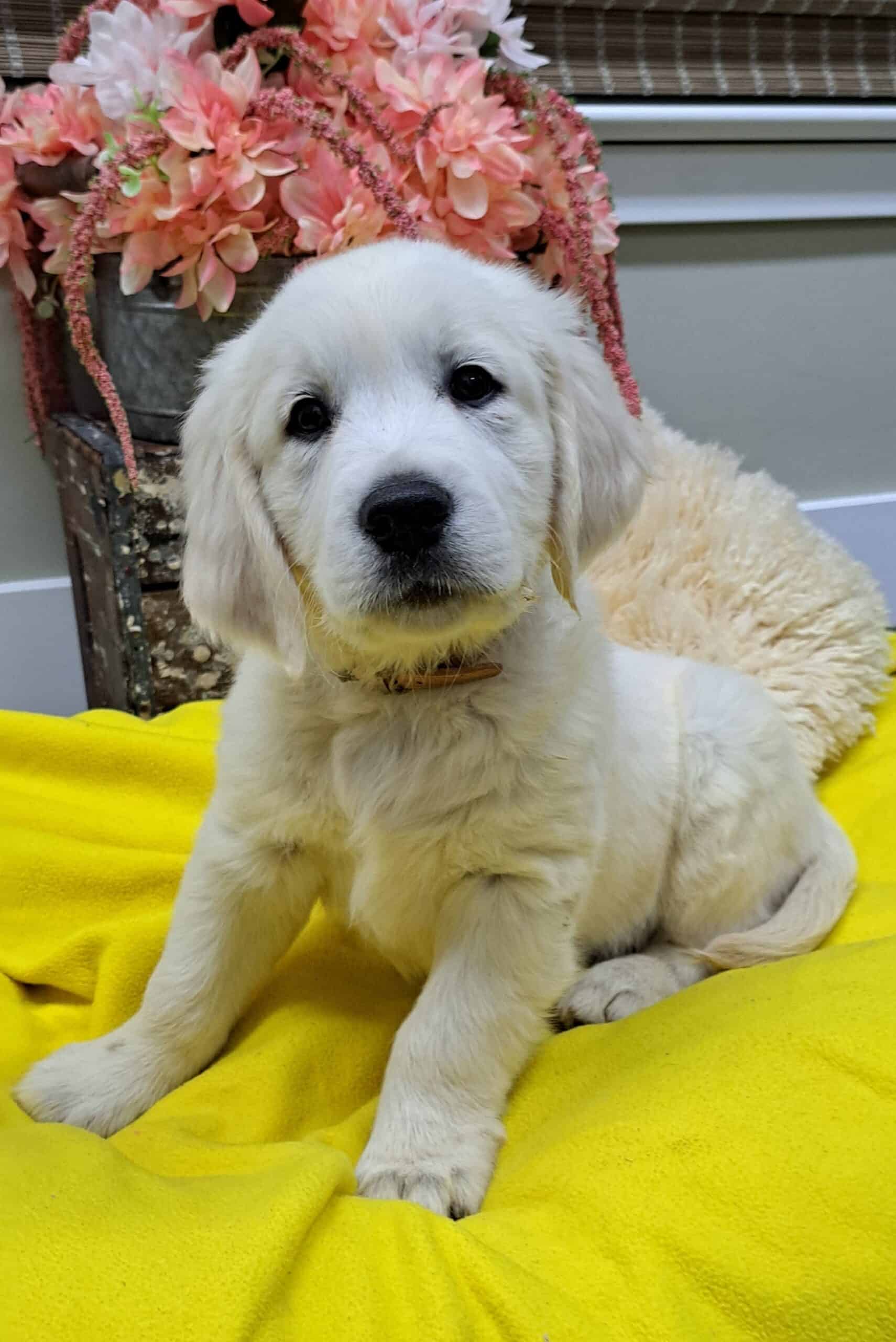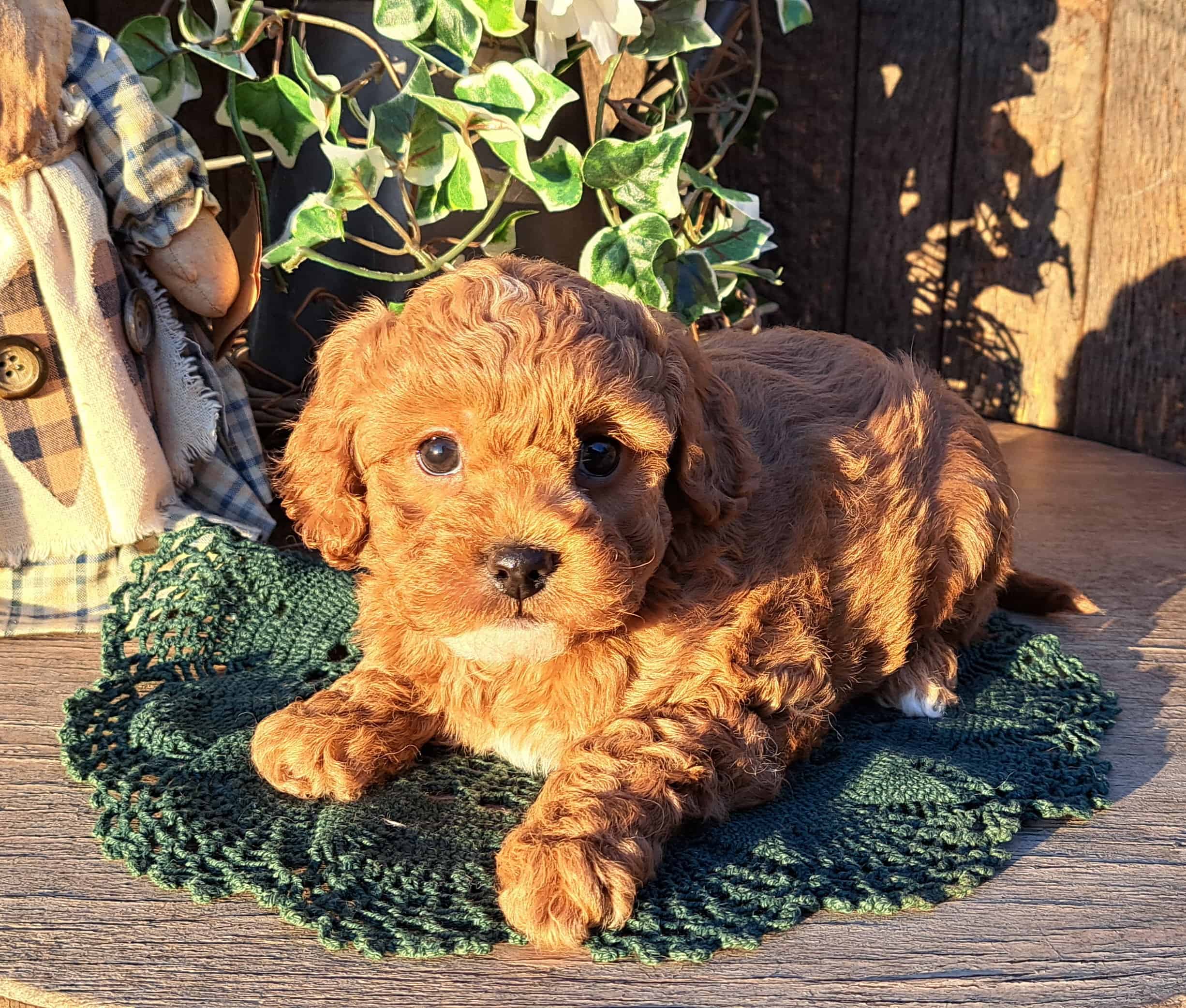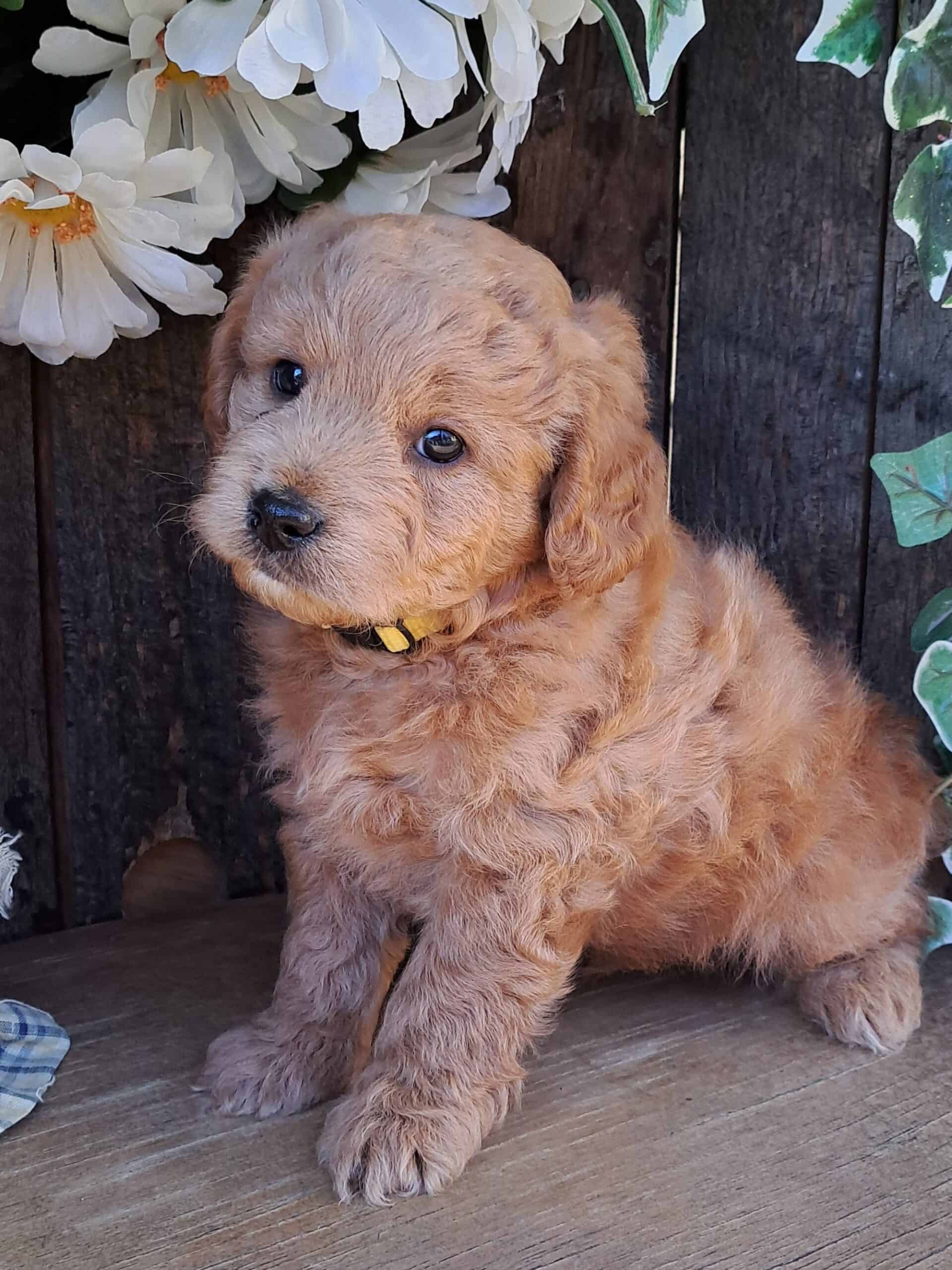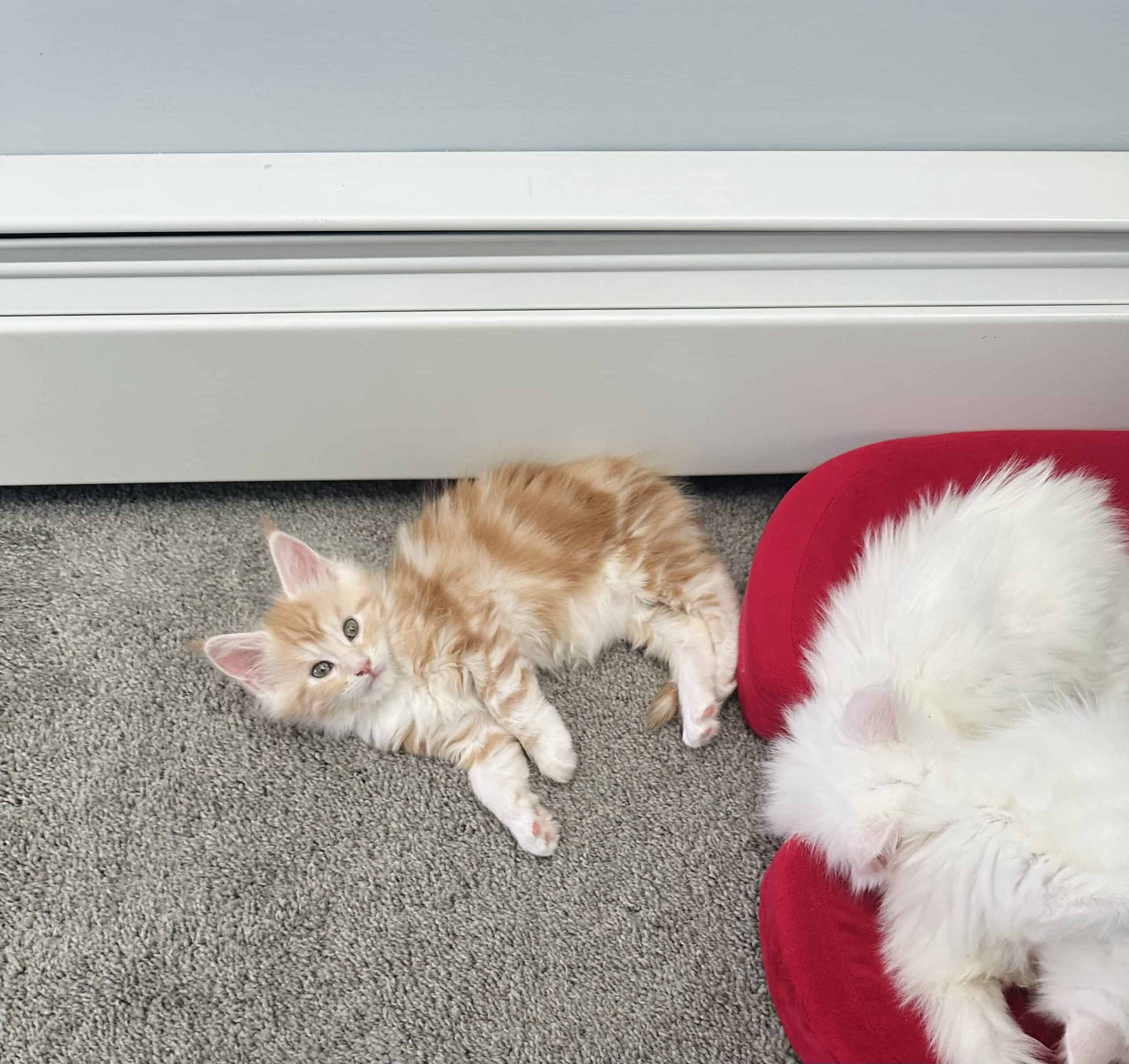Sheepadoodle Puppies for Sale: A Unique Type of Doodle Charm
A Sheepadoodle for sale is a large-sized dog that is a hypoallergenic and affectionate addition to many types of families. Sheepadoodles resemble other Doodles, but you can distinguish them by their black and white particolored coats and round heads. They are also quite active and playful as well as patient with kids and other dogs.
Overview of Sheepadoodle for Sale
A Sheepadoodle is a cross between an Old English Sheepdog and a Poodle. It is sometimes mistaken for a Shepadoodle which is a German Shepherd x Poodle hybrid. While it is similar to other Doodles, the Sheepadoodle has a unique appearance and set of behavioral characteristics. It goes by several names in addition to Sheepadoodle.
- Sheep-a-Poo
- Sheepdogpoo
- Sheeppoo
- Sheepdoodle
History
The Sheepadoodle has an unusual history for a designer dog. It started as an experimental military canine in the 1960s. However, it was better suited as a companion animal than an army dog. The cross did not gain momentum with the public until the 1980s. Like other Doodles, its popularity first ballooned in the 1990s largely because of its low-shedding coat.
Appearance
Size
At 55 to 85 pounds and 22 to 27 inches tall, the Standard Sheepadoodle is a large dog. This cross utilizes the Standard Poodle. However, there are two additional size variants.
- Mini Sheepadoodle – 25 to 54 pounds; 15 to 22 inches tall
- Toy Sheepadoodle – 10 to 24 pounds; under 15 inches tall
Some fanciers refer to the Mini Sheepadoodle as the medium variant. A Toy Poodle is necessary for Toy Sheepadoodles and Miniature Poodles are used for Medium Sheepadoodles. The size of a Sheepadoodle is not guaranteed, but breeders increase its predictability by working with multigeneration and backcrosses. For example, you might cross a first-generation Sheepadoodle with a purebred Miniature Poodle to increase the number of Mini Sheepadoodles in a litter.
Structural traits
Doodles have become craze-worthy because they all have similar Teddy bear looks. A Sheepadoodle has a dome-shaped head that is flatter between the ears than the Labradoodle or Goldendoodle. The ears are low-set and floppy and tend to frame the dog’s face. Regardless of the size variety, Sheepadoodles are compact with a level back and sturdy limbs. The chest is deep and moderately broad with powerful hindquarters. If left intact, a Sheepadoodle’s tail will extend to the hocks and be carried upward when excited. More often, the tail is docked into a bob.
Coat
Sheepadoodles can have a coat anywhere within the spectrum between straight and dense to tightly curled. Many have shaggy hair with loose curls or pronounced waves. However, some have the double coat of their Old English Sheepdog parents. Since the goal is a hypoallergenic coat, breeders often seek more Poodle blood in their lines.
Colors
Sheepadoodles are most often white and gray. Their pattern is usually what is referred to as Irish spotting with white in stereotypical areas such as the face, throat, chin, chest, abdomen, and feet. Think of the Tuxedo pattern on Boston Terriers. Sheepadoodles are also frequently particolored with white occupying over a third of their bodies. Like Old English Sheepdogs, Sheepadoodle puppies for sale are commonly born black and white, and a graying gene makes them turn lighter by maturity. Silver dogs are lighter than grays with the same pattern of white markings. Possible Sheepadoodle colors are listed below.
- Black & white – common
- Gray & white – common
- Silver & white – fairly common
- Red & white – come from Poodle genes and ranges from apricot to deep red; extremely rare
- Chocolate & white – rare
- Merle – very rare; usually have white markings; merle is a solid base with splotches and marbling of a darker color
- Grizzled – rare pattern among dogs, only a few breeds possess grizzling gene; in Sheepadoodle and OES, results in black and white mixed hairs that make the dog appear gray from a distance
- Sable – rare; red or brown hairs with bands of color culminating in darkened tips of some or all non-white hairs
- Fawn – uncommon; diluted chocolate in this breed; called lilac or Isabella in some other breeds
- Cream – uncommon; even lighter than fawn
Personality
The Sheepadoodle’s obvious intelligence and loyalty gave the army great hopes for a valuable working dog. However, the cross also proved exceedingly playful and friendly. They are intuitive but do not have a high capacity to be serious for a substantial length of time. Sheepadoodles remain charming, goofy, and emotionally intelligent, making them exceptional as family pets. They have the sense of humor and patience to be great around children, although their size requires constant supervision around toddlers. The smaller variations can be slightly less patient with teasing and are not as resilient against rough play. Sheepadoodles also get along with other pets, although they should never be unattended when with birds, rabbits, reptiles, ferrets, or rodents. Toy Sheepadoodles are susceptible to injury from large dogs and young children.
Lifespan
Most Sheepadoodles live 12 or 13 years, lacking the longevity of Poodles. The Mini Sheepadoodle has a lifespan closer to 14 or 15 years.
Sheepadoodle Generations
Being designer dogs, breeders created the Sheepadoodle to extract the most desirable qualities from both parents. Selection for these dogs begins anew the same way purebreds were founded in the first place. Therefore, it is a common practice for a breeder to take a hybrid and backcross it with a purebred to reinforce one or more of its best features. It is very frequently performed with Doodles to refine the highly coveted hypoallergenic and low-shedding Poodle coat. Generations are named, and the higher their numbers, the more predictable certain characteristics become.
F1 Sheepadoodle Puppies for Sale
If you are in the market for a Sheepadoodle, most puppies will be F1 dogs. An F1 generation puppy is simply one born of a purebred Poodle and a purebred Old English Sheepdog. Such dogs are the most uniform in color but have a large range of coat types.
F1b Sheepadoodle
The “b” in F1b stands for backcross. An F1b Sheepadoodle is common and comes from an F1 dog crossed back to a purebred Poodle or OES. More often than not, the cross uses a Poodle. The result of this mix is a litter of puppies with mostly wavy or curly low-shedding hair and increased color possibilities depending on the Poodle used. Breeders may increase the amount of Poodle blood in their dogs by breeding an F1b Sheepadoodle back again to a purebred Poodle. This results in an F1bb Sheepadoodle.
F2 and Beyond Sheepadoodle
F2 Sheepadoodles come from a few possibilities.
- F1 X F1
- F1 x F1b
- F1b x F1b
The little-known fact about F2 dogs is that they are as unpredictable in appearance as F1 dogs. Breeders deal with an equally expansive possibility of gene combinations in an F1 or F2 dog. Therefore, multigenerational dogs typically have at least one backcross. A multigenerational Sheepadoodle is an F3 dog or greater. Ways to create an F3 Sheepadoodle follow the same trends as for an F2 dog.
- F2 x F2 – uncommon
- F2b x F2b
- F2 x F2b
- F2 x F1bb
Breeders typically aim for a Sheepadoodle that is at least 62% Poodle. Some approach 90% Poodle blood.
Percentages are approximate and prove accurate for the majority of a litter.
- F1 – 50% Poodle, 50% OES
- F1b – 75% Poodle
- F1bb – 87.5% Poodle
- F2 – an F1 x F1 dog will be 50% Poodle
- F2b – 62.5% Poodle
- F2bb – 81.25% Poodle
Care of a Sheepadoodle for Sale
Sheepadoodles have care needs like those of the other Doodles.
Feeding
High-quality dog food for a Sheepadoodle contains mostly protein from meats along with fat, vitamins, and minerals. Nutritionists cite that vitamins and minerals from whole-food sources are better than synthetic supplements, but homemade cooked and raw diets can fall short altogether. It is crucial to consult with a veterinarian or board-certified animal nutritionist if you wish to formulate your dog’s meals from home. You can also consult with an expert about the benefits of adding certain carbohydrates or whether whole grains or starches are appropriate for your dog. Sheepadoodles typically need 28 to 35 calories per pound of body weight each day. Unless your dog is underweight, calculations for fresh food are based on a percentage of your pet’s weight. You can maintain most adult dogs on 2.5% to 3.5% of their body weight. Puppies require 4% to 6% after eight months of age and up to 12% during their fastest growth stages.
Grooming
Grooming is an important and multifaceted routine for your dog.
- Brushing frequency depends on hair type
- Bathe every one to three months
- Nail trim every four to six weeks
- Check ears every two to three days
- Wipe face daily
- If you trim or shave – every four to six weeks; a popular haircut is short all over with longer hair on the head
Curly-coated dogs need a daily brushing while flat-coated Sheepadoodles require you to brush them three or four times a week. If your dog has straight hair, you will have to increase your brushing frequency to every other day during heavy shedding periods in the spring and fall. If your Sheepadoodle has wavy fur, you should brush her every two to three days.
Exercise
Sheepadoodles are moderately active and need 40 to 60 minutes of daily exercise. They do better if split up their activities into at least two sessions. Puppies need more training and socialization than adults with hardly any emphasis on physical exertion. You also must focus on your dog’s mental enrichment through games, puzzles, or tasks. They can excel at activities such as Fetch and swimming. They have found use as therapy dogs for people suffering from post-traumatic stress syndrome.
Training
A Sheepadoodle is naturally obedient and intelligent. It is willing to please and therefore relatively easy to train. Sheepadoodles should start training early like other dogs and need consistent, frequent, and short sessions. They can be sensitive and will shut down if your methods are too harsh.
